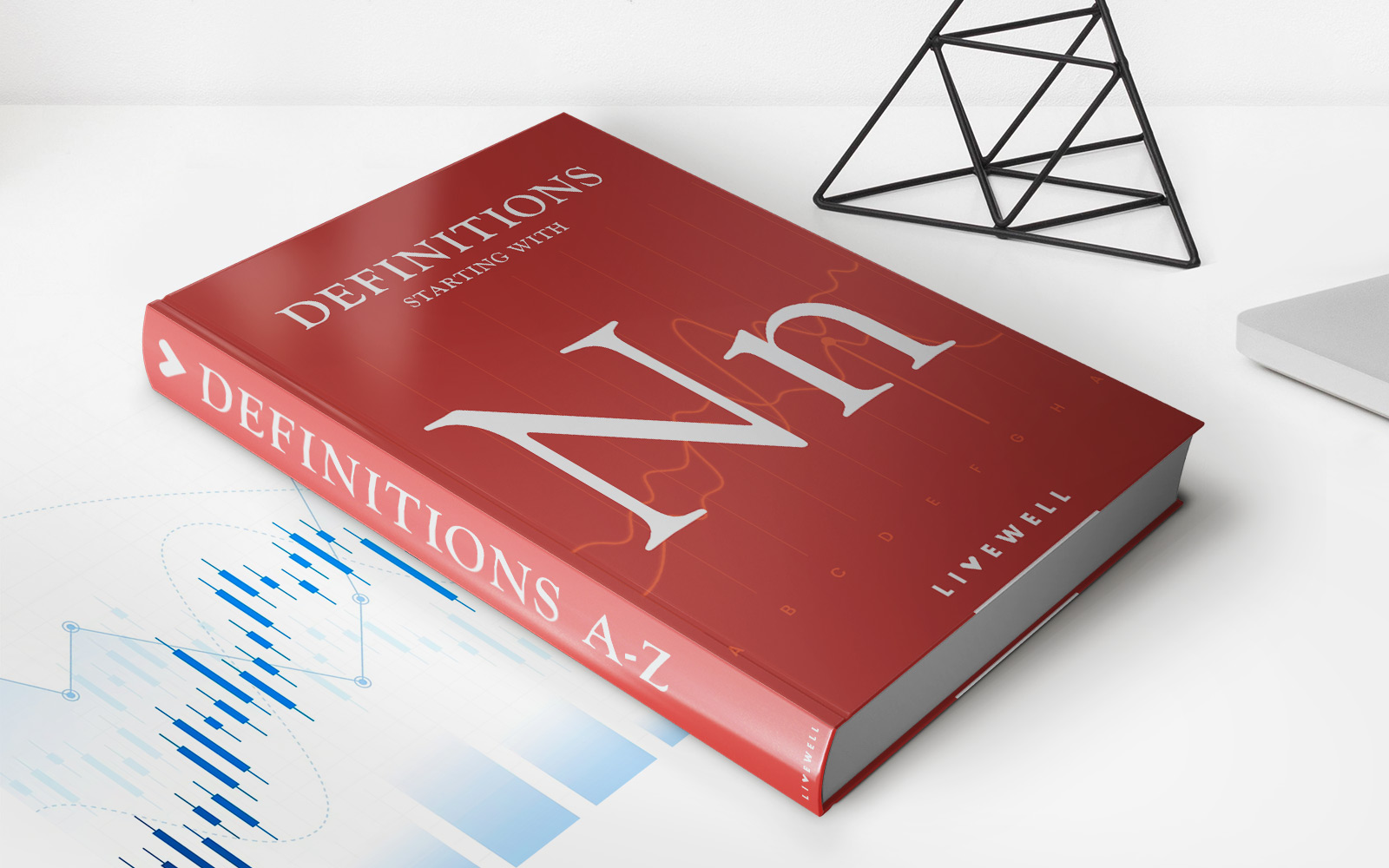

Finance
How To Find Value Of Savings Bonds
Published: January 16, 2024
Discover the value of your savings bonds and maximize your financial potential with our step-by-step guide. Find out how to unlock the secrets of finance today.
(Many of the links in this article redirect to a specific reviewed product. Your purchase of these products through affiliate links helps to generate commission for LiveWell, at no extra cost. Learn more)
Table of Contents
Introduction
Many individuals rely on savings bonds as a safe and secure investment option. Whether you received savings bonds as a gift or purchased them yourself, it’s important to keep track of their value over time. The value of savings bonds can fluctuate based on various factors, and knowing how to determine their worth is essential for financial planning.
In this article, we will delve into the world of savings bonds and explore the different types available. We will also discuss the factors that can affect the value of savings bonds and provide tips on how to maximize their potential. Additionally, we will highlight online resources that can help you easily check the value of your savings bonds.
Understanding the value of your savings bonds is not only crucial for keeping track of your assets but also for making informed decisions about when to redeem them or utilize them for financial goals.
So, let’s dive in and explore the world of savings bonds to learn how to find the value of your investments!
Understanding Savings Bonds
Savings bonds are issued by the U.S. Department of the Treasury as a means of borrowing money from individuals to fund government projects and initiatives. They are considered one of the safest and most secure investment options available.
When you purchase a savings bond, you essentially lend money to the government for a specified period of time, during which the bond will accrue interest. At the end of the bond’s term, you can redeem it for its full face value plus the accumulated interest.
Savings bonds are typically issued in two types: Series EE and Series I.
Series EE Bonds
Series EE bonds are the most common type of savings bond. They are purchased at a discount to their face value and accrue interest over a predetermined period, usually 20 years. The interest rate for Series EE bonds is fixed, meaning it will not change throughout the bond’s term. This feature provides stability and predictability for investors.
Series I Bonds
Series I bonds, on the other hand, are inflation-protected savings bonds. These bonds pay interest based on a combination of a fixed rate and an inflation rate that is adjusted semiannually. This makes Series I bonds an attractive option for investors seeking protection against the erosion of purchasing power caused by inflation.
Both Series EE and Series I savings bonds can be purchased either online through the TreasuryDirect website or with your tax refund by choosing the “Split Refund” option.
It’s important to note that savings bonds have a minimum holding period of one year, and if you redeem them before five years, you may lose the last three months of interest. Therefore, it’s essential to consider your investment goals and time horizon before purchasing savings bonds.
Now that we have a basic understanding of savings bonds, let’s explore the factors that can influence their value.
Types of Savings Bonds
As mentioned earlier, there are two main types of savings bonds: Series EE and Series I. Each type has its own unique features and benefits. Let’s take a closer look at these types of savings bonds:
Series EE Bonds:
Series EE bonds are a popular choice among investors. They are sold at a discount to their face value, which means you pay less than the bond’s full value upfront. These bonds have a fixed interest rate that is determined at the time of purchase, and the interest is compounded semiannually. Series EE bonds have a maturity period of 30 years, but they reach their full face value after 20 years.
One noteworthy feature of Series EE bonds is that they can earn interest for up to 30 years, making them a long-term investment option. However, it’s important to keep in mind that these bonds may stop earning interest once they reach their full maturity, so it’s advisable to redeem them at that point.
Series I Bonds:
Series I bonds are designed to provide protection against inflation. These bonds earn interest based on two components: a fixed rate and an inflation rate. The fixed rate remains constant for the life of the bond, while the inflation rate is adjusted semiannually based on changes in the Consumer Price Index (CPI).
Series I bonds have a maturity period of 30 years, but they can be redeemed after one year. However, if you redeem them before five years, you’ll forfeit the last three months of interest. The advantage of Series I bonds is that they offer a hedge against inflation, ensuring that your investment keeps pace with rising prices.
Both Series EE and Series I bonds can be purchased electronically through the TreasuryDirect website or obtained in paper form through financial institutions. It’s worth noting that as of January 1, 2012, paper savings bonds are no longer sold at financial institutions, but existing paper bonds can still be redeemed or replaced if lost or stolen.
Now that we’ve covered the different types of savings bonds available, let’s explore the factors that can impact their value.
Factors Affecting the Value of Savings Bonds
The value of savings bonds can be influenced by several factors. Understanding these factors can help you gauge the performance of your bonds and make informed decisions. Let’s explore the key factors that can affect the value of your savings bonds:
Interest Rates:
The interest rates set by the U.S. Department of the Treasury play a significant role in determining the value of savings bonds. For Series EE bonds, the interest rate is fixed at the time of purchase and remains constant throughout the bond’s term. Series I bonds have a fixed rate component plus an inflation rate component, which is adjusted every six months. Higher interest rates generally result in higher bond values, while lower interest rates can lead to lower bond values.
Inflation:
Since Series I bonds are designed to protect against inflation, changes in inflation rates can impact their value. Inflation erodes the purchasing power of money over time, and the inflation component of Series I bonds is designed to counteract this effect. When inflation is high, the value of Series I bonds is likely to increase, as the interest rate adjusts accordingly. Conversely, when inflation is low, the value of Series I bonds may not experience significant growth.
Time to Maturity:
The time remaining until a savings bond reaches its maturity date can affect its value. In general, the closer a bond is to its maturity date, the closer its value will be to its face value. This is particularly true for Series EE bonds, which reach full face value after 20 years. If you hold a Series EE bond for a longer period, its value will continue to increase as interest accrues.
Market Conditions:
Overall market conditions, particularly prevailing interest rates in the broader economy, can influence the value of savings bonds. If interest rates rise significantly, the value of existing bonds with lower interest rates may decline in comparison. On the other hand, if interest rates decrease, the value of existing bonds with higher interest rates may rise.
By considering these factors, you can better understand the value of your savings bonds and assess their performance over time. Next, we’ll explore how to determine the value of your savings bonds.
Finding the Value of Savings Bonds
Keeping track of the value of your savings bonds is essential for effective financial planning. Whether you want to check the current worth of your bonds or estimate their future value, there are several methods to find the value of savings bonds:
TreasuryDirect Website:
The most convenient way to determine the value of your savings bonds is by using the TreasuryDirect website. If you have an account with TreasuryDirect, you can access your bond information online and monitor their current worth. The website provides a comprehensive view of your holdings, including the bonds’ original purchase price, current value, and accrued interest. It also allows you to calculate the value of your bonds at various maturity dates.
Using the Savings Bond Calculator:
The TreasuryDirect website offers a Savings Bond Calculator that allows you to input the relevant information about your bonds, such as bond series, denomination, and issue date. With these details, the calculator provides an accurate estimate of the current value of your savings bonds. This tool is especially helpful for those who do not have a TreasuryDirect account.
Redeeming Paper Savings Bonds:
If you have paper savings bonds, you can determine their value by redeeming them at a financial institution or mailing them to the Treasury Retail Securities Site. The institution will verify the authenticity of the bonds and provide you with the current value. Alternatively, you can submit the bonds to the Treasury Retail Securities Site for redemption and receive the value via direct deposit or check.
Consulting a Financial Advisor:
If you prefer professional guidance, consulting a financial advisor can be a valuable option. A financial advisor can help you assess the current and future value of your savings bonds, taking into account market conditions, interest rates, and other relevant factors. They can provide personalized advice based on your financial goals and help you make informed decisions regarding your savings bonds.
Remember, the value of savings bonds can fluctuate over time due to factors such as interest rate changes and inflation. Regularly monitoring and understanding the value of your savings bonds will empower you to make informed financial decisions.
Now that we know how to find the value of savings bonds, let’s explore some online resources that can simplify this process.
Online Resources for Checking Savings Bonds Value
In the digital age, checking the value of your savings bonds has become more convenient than ever. Several online resources can help you easily access and track the value of your bonds. Let’s explore some of the top online tools and platforms:
TreasuryDirect Website:
The TreasuryDirect website is the official platform provided by the U.S. Department of the Treasury for managing savings bonds. If you have an account with TreasuryDirect, you can log in and access detailed information about your savings bonds, including their current value, accrued interest, and maturity dates. You can also use the Savings Bond Calculator on the website to estimate the future value of your bonds.
Savings Bond Wizard:
The Savings Bond Wizard is a free software program developed by the U.S. Department of the Treasury. It allows you to manage and track the value of your savings bonds on your computer. You can input the details of your bond holdings, such as series, denomination, and issue date, and the software will provide you with the current value of your bonds and their growth over time.
Savings Bond Pro:
Savings Bond Pro is another software tool provided by the U.S. Department of the Treasury. It is designed for financial institutions and allows them to manage large volumes of savings bonds. While this tool is primarily intended for institutions, it can be useful for individuals who have a significant number of savings bonds and require a more sophisticated tracking system.
Financial Institution Websites:
Many financial institutions, such as banks and credit unions, offer online banking platforms that provide access to savings bond information. If you hold your savings bonds through a financial institution, you can log in to your account on their website and check the current value of your bonds. These platforms often provide comprehensive information and allow you to download statements and track your bond holdings easily.
These online resources provide convenient ways to access and manage your savings bonds, allowing you to stay informed about their value and track their growth. By utilizing these tools, you can effectively monitor your investments and make informed decisions for your financial future.
Now that we know how to check the value of savings bonds online, let’s explore some tips for maximizing the value of your savings bonds.
Tips for Maximizing the Value of Savings Bonds
Savings bonds can be a valuable addition to your investment portfolio, and there are several strategies you can employ to maximize their value. Consider the following tips to make the most of your savings bonds:
Hold Bonds Until Maturity:
One of the simplest ways to maximize the value of savings bonds is to hold them until they reach their maturity date. Both Series EE and Series I bonds continue to earn interest until the end of their term. By allowing your bonds to mature, you can ensure that you receive the full face value plus the accumulated interest, potentially maximizing your returns.
Time Your Redemptions:
If you need to redeem your savings bonds before their maturity date, consider the timing of your redemptions. As mentioned earlier, both Series EE and Series I bonds have a minimum holding period of one year. However, if you redeem the bonds before five years, you’ll forfeit the last three months of interest. To avoid losing out on interest, carefully time your redemptions to minimize the impact on your overall returns.
Utilize Tax Advantages:
Savings bonds offer certain tax advantages that can help maximize their value. For example, the interest earned on Series EE and Series I bonds is exempt from state and local income taxes. Additionally, if you use the funds from redeemed savings bonds for qualified higher education expenses, you may be eligible for a tax exclusion. Be sure to familiarize yourself with the tax benefits associated with savings bonds and leverage them to your advantage.
Consider Reinvesting:
When your savings bonds reach maturity, you have the option to reinvest the proceeds into new bonds. This allows you to continue earning interest and potentially grow your savings. Consider reinvesting in bonds with higher interest rates or exploring other investment options that align with your financial goals and risk tolerance.
Monitor Market Conditions:
Stay informed about prevailing interest rates and market conditions to make strategic decisions regarding your savings bonds. If interest rates rise significantly, it might be beneficial to hold onto your existing bonds, as their value will increase. On the other hand, if interest rates drop, it could be a good time to redeem your bonds and reinvest in higher-yielding options.
By practicing these strategies, you can optimize the value of your savings bonds and make the most of your investment. Regularly reassess your financial goals and adapt your bond holdings accordingly to ensure they align with your overall investment strategy.
Now, let’s conclude our article on finding the value of savings bonds.
Conclusion
Understanding the value of your savings bonds is crucial for effective financial planning. Whether you have Series EE or Series I bonds, monitoring their worth allows you to make informed decisions about when to redeem them or utilize them for financial goals. By considering factors such as interest rates, inflation, time to maturity, and market conditions, you can gauge the performance of your bonds and assess their value accurately.
Thanks to the convenience of online resources, checking the value of your savings bonds has become easier than ever. The TreasuryDirect website, Savings Bond Wizard, and financial institution platforms provide quick access to bond information and calculators to estimate their current and future value. Utilizing these tools enables you to stay informed about your investments and track their growth effortlessly.
To maximize the value of your savings bonds, consider strategies such as holding the bonds until maturity, timing redemptions strategically, utilizing tax advantages, reinvesting the proceeds, and monitoring market conditions. These strategies can help you optimize your returns and make the most of your investment.
Remember, savings bonds offer a secure and reliable means of investment, and understanding their value empowers you to make smart financial decisions. Keep track of your bond holdings, reassess your goals periodically, and adapt your portfolio as needed to align with your financial aspirations.
Now that you have a comprehensive understanding of finding and maximizing the value of savings bonds, you can confidently manage your investments and navigate your financial journey with greater insight and control.














